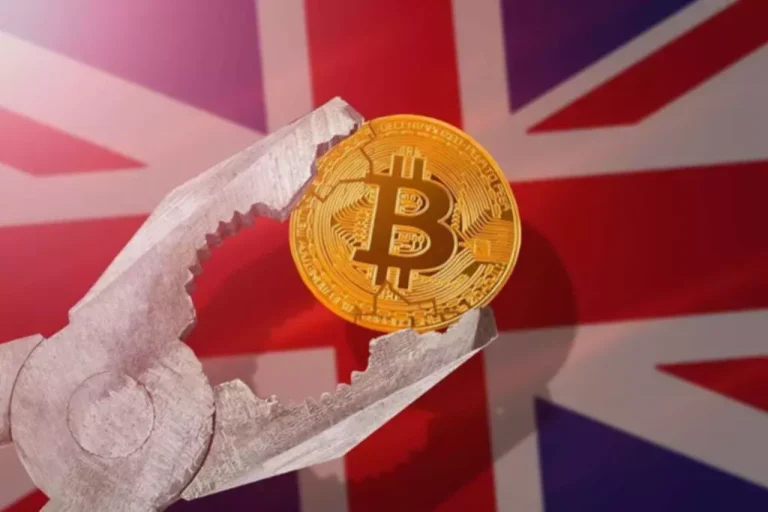Benefits of Blockchain: Faster Payment Processing Amex US
Content
This ensures that transaction records are securely saved and https://www.xcritical.com/ that data integrity is maintained without the need for external record-keeping. By integrating these elements, blockchain technology provides a robust framework for modernizing payment systems, ensuring security, transparency, and efficiency. A unique cryptographic hash identifies each block, which also includes the hash of the previous block, creating a secure, interlinked chain. When a new transaction occurs, it is added as a new block after being validated by all network nodes through consensus mechanisms such as Proof of Work or Proof of Stake.
A map of market forces impacting instant payments and blockchain adoption

We deliver blockchain solutions for secure, prompt, and cost-effective processing of cross-border payments. In our blockchain projects, we rely on robust quality management and data security management systems backed up by ISO 9001 and ISO certifications. Despite their advantages, blockchains are not a panacea for cross-border payments. While in theory blockchain-enabled payments can be instant, users encounter administration time and costs of managing their cryptocurrency, including moving money between wallets and between on and offchain rails. Decentralized finance While blockchain technology offers numerous advantages for payment systems, its implementation also comes with several challenges and limitations. Understanding these obstacles is crucial for organizations considering the adoption of blockchain-based payment solutions.
What is the unique proposition Blockchain Offers to Digital Payments and Financial Services?
- This technology has already made significant inroads into various business workflows and sectors, such as retail, supply chain, healthcare, and real estate.
- The launch of the Federal Reserve’s FedNow Service in July 2023 has seen more than 900 financial institutions1 offering the service during its first year of operation.
- The distributed nature of the ledger in blockchain technology allows each participant of a transaction to access the ledger and check it at any time.
- They find that up to 40% of customers that pay with a cryptocurrency are new to them; and that their purchases are twice as valuable as credit card transactions.
- We at Corefy provide our clients with an opportunity to connect dozens of payment methods, including cryptocurrencies, through a single connection with our platform.
- Tax treatment of decentralized payments and transactions involving cryptocurrencies can vary.
Iconic brands and retailers have added cryptocurrencies to their accepted payment methods over the decade – from Starbucks, Tesla, Nordstrom and Whole Foods to Gucci, Balenciaga and Tag Heuer. They find that up to 40% of customers that pay with a cryptocurrency are new to them; and that their purchases are twice as valuable as credit card transactions. As the number of transactions increases, the blockchain network can become congested, leading to slower transaction times and higher fees. This limitation is particularly problematic for payment systems that require high transaction throughput. Solutions such as off-chain transactions and the development of more efficient consensus blockchain for payments algorithms are being explored to address scalability issues. By exploring these use cases, we can better appreciate the full potential and practical benefits that blockchain technology brings to the payments industry.
Cross-Border Payments on Blockchain: Market Info
Blockchain plays a significant role in the decentralised economy, holding the crypto payments and DeFi ecosystems together and acting as the backbone of crypto transactions. If you are considering incorporating blockchain into your payment systems, PixelPlex blockchain development company can help you navigate this complex landscape. It is essential to provide a smooth integration of a new blockchain payment system with existing legacy solutions to minimize disruption to current operations.

Voting with blockchain carries the potential to eliminate election fraud and boost voter turnout, as was tested in the November 2018 midterm elections in West Virginia. Using blockchain allows brands to track a food product’s route from its origin, through each stop it makes, to delivery. Not only that, but these companies can also now see everything else it may have come in contact with, allowing the identification of the problem to occur far sooner—potentially saving lives. This is one example of blockchain in practice, but many other forms of blockchain implementation exist or are being experimented with.
By contrast, accepting payments via P2P (person-to-person) transactions utilizing blockchain technology eliminates some of these middlemen, resulting in lower processing fees. One of blockchain technology’s primary advantages is its inherent security features. Decentralized record-keeping and cryptographic protocols can secure transactions and make them tamper-proof. In contrast to the “openness” of public chains, private blockchains require permission to access and are controlled by a single organization (e.g., a business, bank, or service organization). Access to the system would be internal, and customers would not be privy to its contents. To send a payment or settle funds across borders, money must pass through multiple dislocated banking systems and intermediaries, adding cost and time with every hop.
This automation not only streamlines the process but also eliminates the need for intermediaries like escrow agents, ensuring a quicker and more secure transaction. A user initiates a transaction by sending a request to the blockchain network. This request is then broadcast to a network of nodes, which validate the transaction using consensus mechanisms such as Proof of Work (PoW) or Proof of Stake (PoS). Payment vs. Payment (PvP) is a settlement mechanism used in financial transactions to ensure that the transfer of funds occurs only if both parties involved fulfill their payment obligations simultaneously. This method mitigates the risk of one party defaulting while the other has already transferred the funds.
Because of this distribution—and the encrypted proof that work was done—the blockchain data, such as transaction history, becomes irreversible. Such a record could be a list of transactions, but private blockchains can also hold a variety of other information like legal contracts, state identifications, or a company’s inventory. Most blockchains wouldn’t “store” these items directly; they would likely be sent through a hashing algorithm and represented on the blockchain by a token. Albeit timidly, governments worldwide have been on a steady path to recognize cryptocurrencies (and, thus, blockchain-based payments) as a reality.
Upon successful validation, payment transactions and relevant data from the connected systems (e.g., data on currency exchange rates) are automatically timestamped and recorded in the immutable ledger. Cryptocurrency exchange and crypto mining applications often involve this type of participation in public blockchains. These chains rely on a “consensus” modality with PoW (proof of work) and PoS (proof of state), whereby participants must validate their transactions and add them to the existing blockchain. Others will want to go all in, with crypto-bank accounts from which they can trade and pay others. So breadth of capability should be a key criteria for selecting the right blockchain payments partner.
Blockchain enables micropayments, or, in other words, transactions involving minimal amounts of money. This can underpin business models that rely on small but steady contributions from consumers. Content creators, for example, can benefit as consumers pay small amounts for access to digital content, articles, and other online services. Most importantly, the confidence of global finance leaders in crypto has sharply increased in 2023.
This article will cover blockchain payment solutions in 2024, but rest assured if you’re unsure about how it works, the concept is quite simple once you get past the jargon. A blockchain is essentially a distributed database or ledger, rather like a spreadsheet. It is built of programs called scripts that conduct tasks such as entering and accessing information. A blockchain is distributed, meaning multiple copies are saved on many machines.
Traditional remittance services are often expensive and slow, but with blockchain payments, individuals can send money to family and friends in other countries quickly and at a lower cost. For instance, blockchain payment companies like Ripple and Stellar enable near-instantaneous transfer of funds with minimal fees, making it easier for people to support their loved ones abroad. Blockchain payment systems, on the other hand, eliminate the need for these middlemen. Transactions can be settled more easily and authentically through peer-to-peer transfers.
BVNK is a next-generation payments platform that bridges the gap between traditional and digital finance to help merchants unlock the benefits of blockchain payments with minimal risk and technical setup. We are trusted by hundreds of businesses globally to process billions of dollars in payments every year. Blockchain technology doesn’t directly handle bank transfers, but various platforms and services facilitate interactions between traditional banking systems and blockchain networks.
Enhance working capital and liquidity management with complete visibility into your digital asset payment flows. Fireblocks Payments Engine provides a real-time view into your digital asset settlements with fee calculations, time estimations, and FX rates. Another solution is to accept transactions along several different types of blockchains, but this will necessitate more engineering and maintenance on your end. With over 1,000 blockchains out there (as of 2023), this could be a challenge you’ll need to grapple with.
